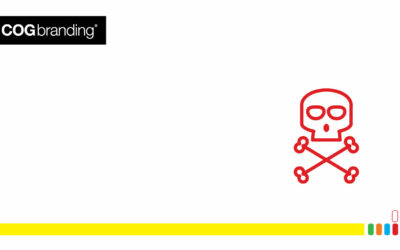SMALL BUSINESS FINANCE
Borrowing money is easy, paying back ain’t so.
Here is where many inexperienced business owners get in a tangle. It’s a fundamental responsibility to be fiscally astute and acknowledge that you will have to take charge of your small business finances and know how to manage cash flow – it’s that simple. When COG Branding are offering Finance Tips For Small Business In Australia it’s because we’re a small business too! And we intimately understands how it impacts businesses as we see it everyday. It could make or break your business. This is one of those times when if you need help, you will need to get help from a financial adviser or someone you trust who understands the ins and outs of financing a business. Professional advice will only take you so far, you will still be responsible for the financial wellbeing of your business, especially if you’re borrowing other people’s money. There are plenty of financial services professionals that can assist in all facets of lending, financing, applying for a loan and borrowing money to assist or fund a startup.
FINANCE INDUSTRY PROFESSIONALS
Companies and individuals in the finance industry will be able to help you by:
- maintaining your books, Tax, BAS, GST.
- manage and monitor budgets
- monitor your cash positions against loans and overdrafts
- Provide advice on buying assets, renting premises and investing back into your business.
While there are numerous choices available on who and what type of finance professional you need to engage, consider what is right for you, your own personal style and think about what it is you actually need help with. Each professional offers a different service and subsequent approach to funding and managing the finances of your business.
THE ACCOUNTANT
Helps your financial requirements such as preparing financial statements, managing tax, BAS, GST and will provide you with financial and business advice.
THE BOOKKEEPER
Manage the day-to-day financial transactions, perform internet banking, manage invoicing, debtors and receivables and pursue overdue payments and pay staff or contractor wages.
THE BAS AGENT (BUSINESS ACTIVITY STATEMENT)
To help you prepare and lodge your BAS so you get it right the first time. They’re registered professionals who are specialists in their field. You can find registered BAS agents on the Tax Practitioners Board (TPB) register – external site.
ACCOUNTING INSIGHTS WITH ANNETTE TASKER
Accounting Considerations When Starting a Business
No one starts a business so they can spend loads of valuable time trying to learn the details of an accounting system, or chase customers for payments, or spend evenings and weekends doing payroll, BAS and preparing your taxes. To get you started, survive and build a transformational business, new business will benefit enormously by having the right accounting partner providing the business with quality commercial tax expertise.
When you start a business, there are tax and other compliance responsibilities that you need to be aware of. You will need to consider when your tax and other obligations are to begin. You need to understand the tax and legal implications of the structure you choose. You will need to consult a professional advisor who can give you facts based on your personal circumstances. Your accountant should always be treated as a partner in your business who can assist with the financial planning that can help a business owner decide if their business will be profitable.
The right accountants will help you to develop a bookkeeping system to allow you to issue invoices, collect payments, track and pay your expenses, manage payroll and communicate with customers, suppliers and staff. Whether doing your accounts is too much for you or just want a little external guidance, small business accountants and financial professionals can help you get more control of your money A failed business affects peoples lives, their families, their health. Often the business has started as a hobby or a side hustle, and owners find they need to formalise their processes. Getting the right advice early can avoid these pitfalls.
10 TIPS FOR START UPS
- Create a plan to build up a cash war chest for future major expenses
- Delegate finance matters to someone, preferably your accountant
- Use accounting software
- Use software you can automate
- Establish a budget and stick to it
- Give customers incentive to pay your promptly
- Keep business and personal expenses separate
- Follow up invoices and pay bills on time
- Control your expenses
- Set some goals, create financial projections for future years
A Pricing Strategy
Managing and setting the price point is as much a business positioning activity, as much as it is a branding activity. Pricing is a critical element of business to get right and to keep on top of. Things will change over time for your pricing such as inflation, competition, wholesale costs of goods and services and plus the desired profit margin. Learn what you need to price your products and services appropriately, including the types of pricing strategy, legislation obligations, what your price should include, and where to conduct research. Remember, you don’t want to get stuck in a race to the bottom. Ever. There will always be a bigger and meaner competitor around the corner who will be able to provide cheaper costs and still survive. Small Australian businesses need to focus on their point of difference, hold strong on your pricing and find your targeted customers who are happy to pay your price. Remember, you can’t be everything to everyone.
Pricing Defined
Pricing is a process that formally sets the price of your products or services in the market. This activity can be difficult to create because pricing your products and services will be determined by multiple factors, some not in your control. When you set your prices too high, your customers might think it’s too expensive. Although low pricing will not only affect your profit margin, it will also tell your customers that you are cheap. And when it’s a race to the bottom with price, sales volumes need to increase, the business works harder and the mouse on the wheel begins to spin for longer and more often. Below is a basic three step overview that will assist in the pricing of your pricing structure.
1. RUN THE MATH, AGAIN AND AGAIN
Calculating your costs is the smart thing to do before you go too far. Before kick off and you look to calculate your prices, it’s useful to calculate how much it costs to produce or deliver your product or service first. When reaching what you think are the best figures, always consider the cost of producing your product or service including your overheads.
Technology will also be your best friend when running the math, we’re not all mathematicians. You will need to do research on what technology is right for your business, though you’ll want to check with your accountant before making that decision and understanding what sort of technology and software support you’ll need.
THE 3B’s x 3 MULTIPLIER
1 for the bills, 1 for the bodies, 1 for the business. A tip, when planning and creating strategy, add in some extra percentage points in the forecasted number scenarios, just in case the cost of goods increases or other economic factors influence the pricing structure. Don’t forget to also factor in goods and services tax (GST) and other relevant taxes in your costing as these are certainties and critical to consumer confidence at checkout. When you’re pricing your products or services, also it’s important to remember you need to consider:
- The manufacturing cost/s
- Your business’s market place
- Your direct and indirect competition
- The market conditions of the day and those in the future
- Other brands entering or exiting the market.
- The general quality of the products or services.
Once you understand the true cost of your product or service you can then start working on marketing strategies that might include “free shipping” or “BOGOF” type offers. Only after you truly understand your COG (Cost Of Goods, no pun intended) can you then start analysing other influences and start setting your objectives and strategies.
2. PRICING RESEARCH
Research can help you find the optimum price for your products. Generally, the optimum price is one that your customers are willing to pay, without it affecting your profits. This isn’t a one-off activity, you must monitor your key pricing influences regularly as part of your overall market research to ensure your prices stay competitive and you still meet your customers’ expectations.
MARKET TESTING
To help you determine how much your customers are willing to pay for your product or service you should perform some form of market testing. As a start, research your customer’s purchasing behaviour such as:
- their current and anticipated demand for this type of product or service
- what they pay for similar products or services
- the quantity likely to be purchased
- additional features they value.
With this customer information in mind, you can then develop a price comparison offering a number of different product or service options for testing to help you determine a price range that is acceptable.
COMPETITORS
You should have already determined who your direct competitors are and how your business compares to them when you developed your marketing plan. This information can be useful to help you determine your price point. If you decide to use your competitors’ prices as a guide, be careful that it doesn’t dictate your prices too much, as it can seriously undervalue your product or service and drive down your profits. When you compare your business to competitors, it’s also important to ensure you look at the business as a whole and compare on other value-based traits (such as special features, quality and customer service) as well as price.
INFLUENCES
Pricing influences are external factors that can impact the price of products. Four influences that you may encounter include:
- price sensitivity
- level of demand
- level of competition
- government regulation.
PRICE SENSITIVITY
Price sensitivity refers to price fluctuations as customer demand increases and decreases. For example, commodity goods such as petrol have high price sensitivity. The difference of a few cents in price can impact a customer’s behaviour. Some markets are more sensitive to price increases than others. Price sensitivity can change over time based on a number of factors including changes in the economic environment, competition or demand. Factors other than price, such as quality, service, and uniqueness, can also influence price sensitivity.
LEVEL OF DEMAND
Product and service demand can influence your prices. If there is high demand, it is likely you can increase your price. Price can also influence demand. For example, if the price lowers, then demand can temporarily increase.
LEVEL OF COMPETITION
Competition can also influence your product’s or service’s price. In general, the less competition you have, the more demand there is for your product. If a new competitor enters the market, the competitor can affect your price.
GOVERNMENT REGULATIONS
Government regulation can influence your pricing decision, as additional fees or levies may increase the sale price of your product or service.
DISCOUNTS
Beware the race to the bottom and eroding hard fought and won brand equity. Discounting can move products but can affect your bottom line. While you may swiftly sell and remove stock from your inventory, you also need to understand how discounts affect the rest of your business. Benefits from offering a carefully strategised discount program can include:
- attracting new customers (buying your way into the market)
- selling unwanted stock
- enticing customers to return (stimulating dormant networks)
There are various types of discounting that include:
- special offers or pricing deals
- packages or bundles
- quantity discounts
- value-add offers
- seasonal or periodic discounts.
If you intend to offer discounts, you should develop a plan specifically for that sale and should not be built into the broader business plan, unless there is a tactical marketing strategy that identifies price as a lever to influence the targeted consumer.
3. ESTABLISH THE PRICING OBJECTIVES
One of the primary considerations for your pricing when starting your business is to learn what are your objectives when you set out to price your products and services. Obviously the main objective of pricing is to make a profit on your products or services, but there are many other elements that are impacted when you decide the prices of your products and services that include:
- The market position
- Your competitors’ brand and market positioning
- The ability to supply to or increase demand of your services and products.
It’s important to keep your business and marketing objectives in mind when developing your pricing objectives to ensure they complement one another. The entire through-the-line brand experience has pricing as a key element that forms a critical factor in how your customers engage with your offer. By establishing your pricing objectives early, your choice of strategy may be easier to determine and also provide opportunities to become more tactical.
BRAND POSITIONING
Positioning can help you understand how and where your products or services are established in the market. For example, your business might sell luxury products, attempt to compete on brand value, or get into the cheap and cheerful lower price point market. Price can be a measure of quality and positioning so it’s important that the price of your products or services run parallel to the broader brand.
INCREASING DEMAND
Leveraging price to increase demand in new or existing products or services can be a good objective for establishing customers or supporting slowing sales. When multiple products or services are involved, it’s a good idea to be aware of how the prices complement each other.
REMAIN AGILE AND COMPETITIVE
For all businesses being price-competitive is important, seldom is there an industry or sector that has no competition and price comparison. Whether as a price leader or responding to the competition. When setting prices it’s always important to be aware of what your competition will do in response to your prices and ensure that you factor it into your strategy. Awareness is key and running a business is not a time to stick your head in the sand and ignore what is happening around you in regards to the competition and their offer and price points.
DETERMINE YOUR PRICING STRATEGY
There are numerous pricing strategies you can engage with when setting your pricing strategy, including strategies based on:
- Products
- Value Perception
- Costs
- Competition
When selecting your pricing strategy, keep your broader marketing strategy in mind to ensure your strategies complement one another.
COST-BASED PRICING STRATEGIES
- Charge Per Hour: this strategy is often used by service-based businesses and independent contractors. The ‘per hour’ method calculates all the relevant costs of a business at an hourly rate. When using this method it’s important to factor in all your business costs and not overlook taxes, a wage for yourself, superannuation and leave entitlements.
- Cost-Plus Pricing: a strategy that adds a small margin or mark-up to the costs of producing and distributing the product or service. Care should be taken when calculating your price to ensure that all relevant costs such as cost of goods sold, fixed costs including GST and other taxes are factored in. If your calculations are accurate this strategy can keep your price competitive while ensuring that you still make a profit.
COMPETITION-BASED PRICING STRATEGIES
- Going rate pricing: this strategy is a safe way for small businesses to remain competitive without eating into profits. The strategy means you price your products and services close to the market price leader.
VALUE-BASED PRICING STRATEGIES
There’s a number of value-based pricing strategies you can use including:
- Value pricing: this strategy is based on what customers think a product or service is worth, rather than actual costs. The value is determined through market testing and a price is set based on this value. For example, sometimes customers will pay more if it saves them a lot of time. The price reflects this saving.
- Premium pricing: this strategy reflects the prestige, luxury or exclusive value of the products or services you provide. Typically, at a premium price customers have high expectations of quality, performance and service.
PRODUCT BASED PRICING STRATEGIES
There’s a number of product-based pricing strategies you can use including:
- Penetration pricing: this strategy provides you the opportunity to set a low initial price on a new product or service to gain high sales or market share. Once this point is reached, the prices are increased to normal pricing levels.
- Loss leader pricing: this strategy aims to attract customers by offering a product or service at below cost. The strategy hopes that customers will also purchase other products or services with a higher profit margin.
- Skimming pricing: this strategy sets a high initial price which aims to excite audiences who desire products or services that are in high demand and are highly valued. Once the required profits are made, the price is then lowered for a wider market.
- Credit card surcharging: you must clearly label any credit card surcharges- external site that apply to your products or services. You can only charge what it costs you to accept that payment method.
So, are you ready to set the pricing and positioning of your Australian small business?
Contact us at COG Branding to discuss further how we can help you on your decision making journey and progress.





